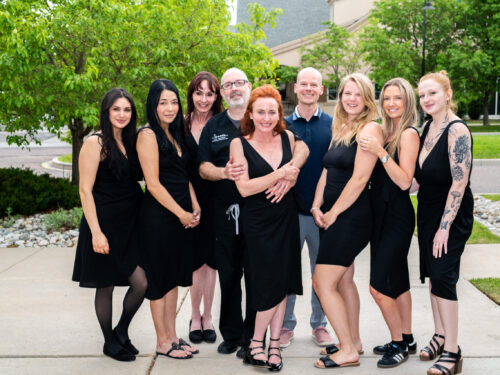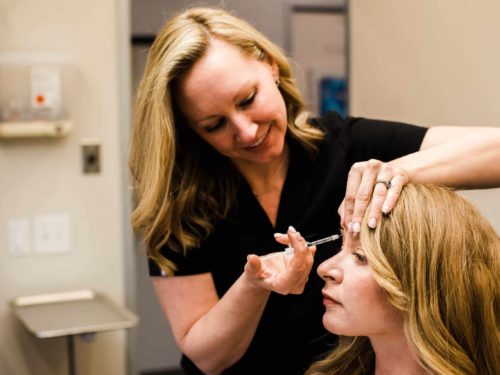Retin A: It works!
by Liz Janowski
Retin-A, or it’s less potent but still clinically effective cousin Retinol, has been on the market for almost 30 years. With a marketplace stuffed with every type of new skin care innovation, why is Retin-A still one of the world’s most widely physician-recommended products? Because it works. Retin-A was first indicated as an acne treatment. Clinical strength retinols and Retin-A are still only available in a physician’s office.
Retin-A, derived from vitamin A, works be promoting healthy skin turnover. With healthy, active cell turnover, pores are less likely to clog and become blackheads and whiteheads, thus the acne benefits. What took researchers by surprise 30 years ago is the benefits of Retin-A for anti-aging. In early studies, Retin-A users reported improvements in skin texture, including diminished wrinkles and brown spots.
Essentially, Retin-A is able to affect how skin cells function. Retin-A normalizes and regulates skin turnover. Moreover, it helps skin cells build collagen. Collagen is what makes our skin look young, taut, firm, and healthy. As we age, we lose collagen, so rebuilding and maintaining collagen is the fountain of youth. Not only does Retin-A actually help you form collagen, retinoids (in Retin-A and Retinols) prevent the rise of collagenase after UV sun exposure. Collagenase breaks down collagen, but regular use of Retin-A/Retinol can prevent that breakdown, stopping photo-aging and sun damage before it begins.
Retin-A has been extensively researched for all of its almost 30 year history, and has been proven to work on a molecular level in countless studies the world over. Retin-A works, and in many ways, it works better than anything else on the market. It is also a tremendously affordable product, with most formulations costing less than $100 for a 4-6 month (or more) supply.
So, why isn’t everyone using Retin-A or a Retinol product? Many patients have had negative experiences with the short-term irritation from Retin-A. Some of us may remember being prescribed Retin-A to clear up acne, and possibly some negative side effects like redness and irritation. The good news is, Retin-A comes in many formulations and strengths so irritation should not be an ongoing concern for our patients. Patients should also stage their usage, starting off by using the product every 2nd or 3rd night before building up to daily usage. A pea-size amount is all you need, and it can be mixed with a moisturizer to make application easier.
Pregnant and lactating women should avoid Retin-A due to the high concentration of Vitamin A and people with severe rosacea may also need to forego the product.
We encourage you to try Retin-A. It might be the best anti-aging product you ever choose!
Schedule a consultation with Sonata Aesthetics today. Serving Broomfield, Denver, Westminster, Boulder, Arvada, and surrounding areas.
**
Liz Janowski
Related Posts

A Family Business
We always say we are a family business - but here is what this means... three families now work at Sonata and what...

Your Big Day
There is so much that goes in to planning for your big day - and not just for you, as the bride. Your mother, your...

Q&A with Amy
A conversation with Amy, our nurse injector and medical skin care provider What sparked your interest in...
